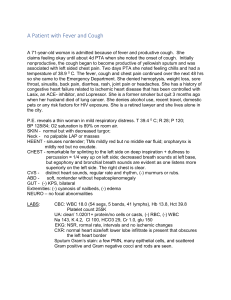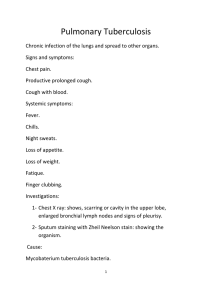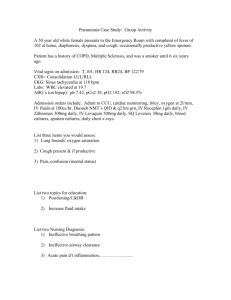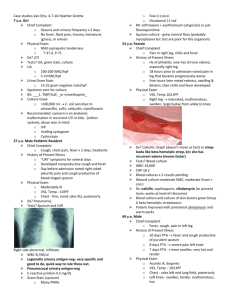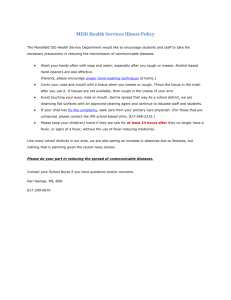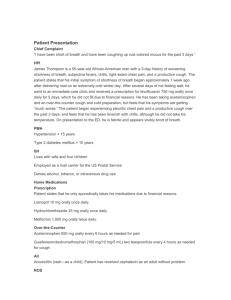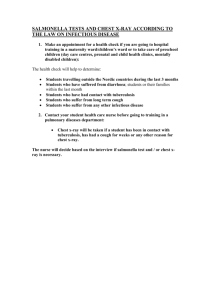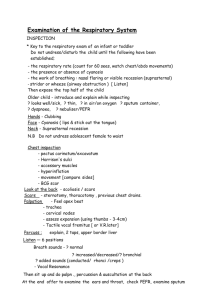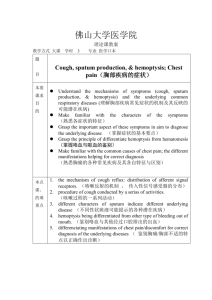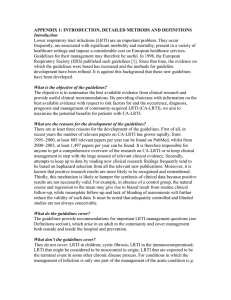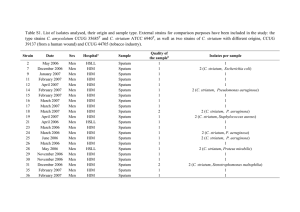Patient with fever and cough
advertisement
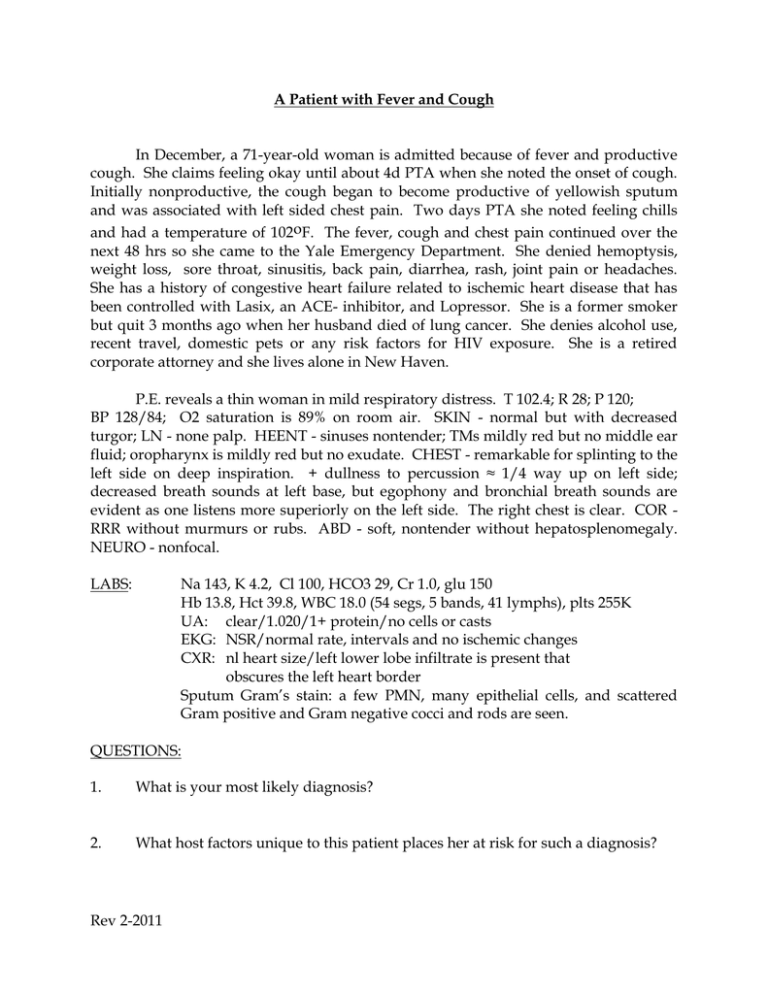
A Patient with Fever and Cough In December, a 71-year-old woman is admitted because of fever and productive cough. She claims feeling okay until about 4d PTA when she noted the onset of cough. Initially nonproductive, the cough began to become productive of yellowish sputum and was associated with left sided chest pain. Two days PTA she noted feeling chills and had a temperature of 102oF. The fever, cough and chest pain continued over the next 48 hrs so she came to the Yale Emergency Department. She denied hemoptysis, weight loss, sore throat, sinusitis, back pain, diarrhea, rash, joint pain or headaches. She has a history of congestive heart failure related to ischemic heart disease that has been controlled with Lasix, an ACE- inhibitor, and Lopressor. She is a former smoker but quit 3 months ago when her husband died of lung cancer. She denies alcohol use, recent travel, domestic pets or any risk factors for HIV exposure. She is a retired corporate attorney and she lives alone in New Haven. P.E. reveals a thin woman in mild respiratory distress. T 102.4; R 28; P 120; BP 128/84; O2 saturation is 89% on room air. SKIN - normal but with decreased turgor; LN - none palp. HEENT - sinuses nontender; TMs mildly red but no middle ear fluid; oropharynx is mildly red but no exudate. CHEST - remarkable for splinting to the left side on deep inspiration. + dullness to percussion ≈ 1/4 way up on left side; decreased breath sounds at left base, but egophony and bronchial breath sounds are evident as one listens more superiorly on the left side. The right chest is clear. COR RRR without murmurs or rubs. ABD - soft, nontender without hepatosplenomegaly. NEURO - nonfocal. LABS: Na 143, K 4.2, Cl 100, HCO3 29, Cr 1.0, glu 150 Hb 13.8, Hct 39.8, WBC 18.0 (54 segs, 5 bands, 41 lymphs), plts 255K UA: clear/1.020/1+ protein/no cells or casts EKG: NSR/normal rate, intervals and no ischemic changes CXR: nl heart size/left lower lobe infiltrate is present that obscures the left heart border Sputum Gram’s stain: a few PMN, many epithelial cells, and scattered Gram positive and Gram negative cocci and rods are seen. QUESTIONS: 1. What is your most likely diagnosis? 2. What host factors unique to this patient places her at risk for such a diagnosis? Rev 2-2011 3. What features of the history and physical exam support this diagnosis? 4. Describe the physical findings in the chest and what they indicate. 5. Is the sputum sample helpful in the diagnosis of this patient? What features of the Gram stain do you look for in evaluating the value of the sputum sample? 6. What kinds of infectious agents can produce this syndrome? Which would be most common? 7. Are there any other diagnostic tests you would order before initiating therapy? 8. What antibiotic(s) would you initiate in this patient empirically? 9. Should the patient be hospitalized or could she be treated as an outpatient? The patient’s sputum culture grows normal flora. Blood cultures grow S. pneumoniae that is susceptible to penicillin. 10. What would you do now, and how can we prevent this from recurring again? Rev 2-2011
